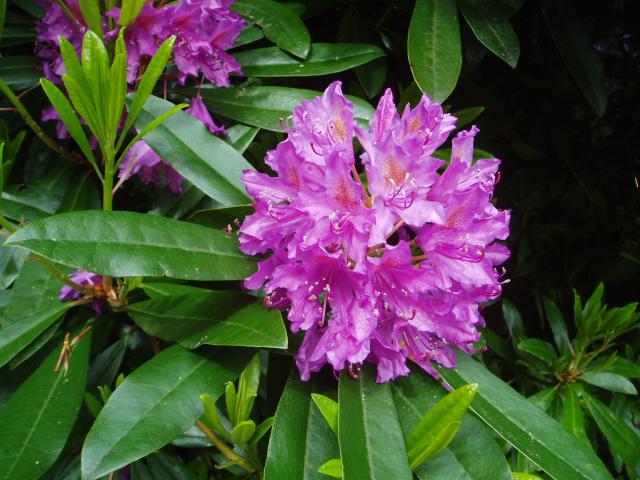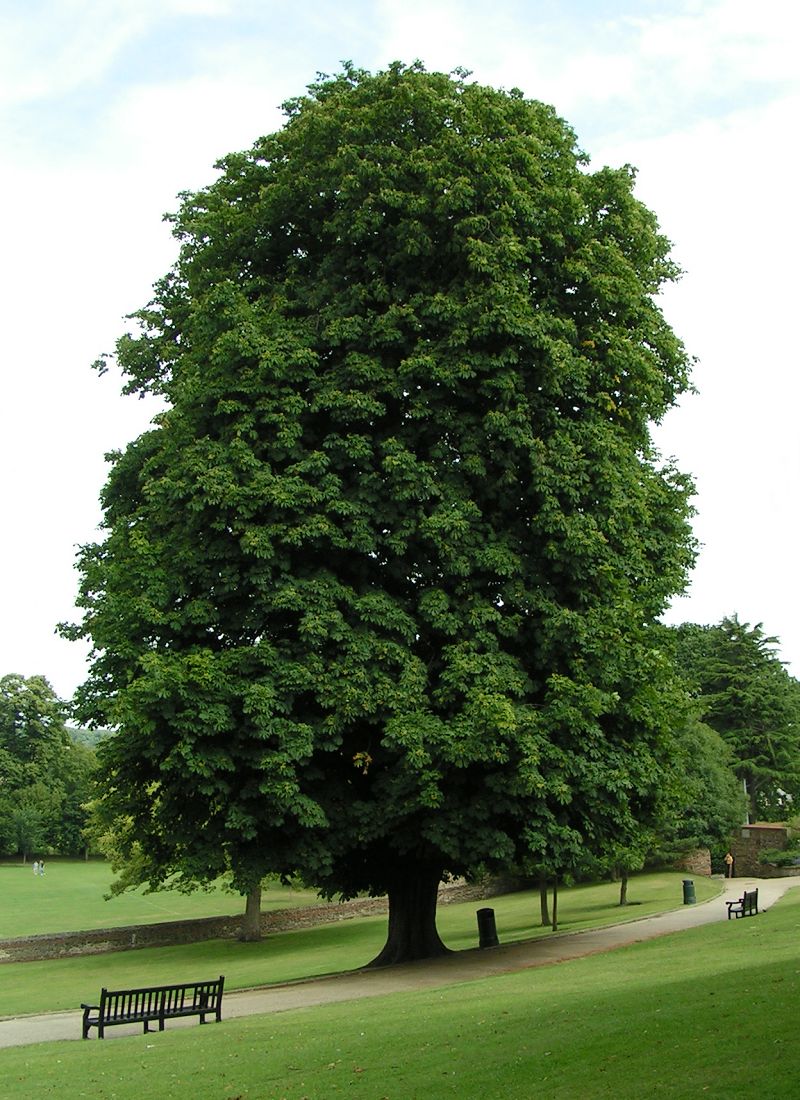|
Archaeophyte
An archaeophyte is a plant species which is non-native to a geographical region, but which was an introduced species in "ancient" times, rather than being a modern introduction. Those arriving after are called neophytes. The cut-off date is usually the beginning of the early modern period (turn of the 15th or 16th century). In Britain, archaeophytes are considered to be those species first introduced prior to the year 1492, when Christopher Columbus arrived in the New World and the Columbian Exchange began. Background Archaeophytes include numerous weed species the seeds of which have been found in archaeological excavations - to which they had been brought by people ( anthropochory), animals (zoochory) or the wind (anemochory). In some cases, introduced species, whether archaeophytes or neophytes, may have been native species before the ice ages, which extirpated vast numbers of plant species. Central European archaeophytes almost all come from the Mediterranean region and th ... [...More Info...] [...Related Items...] OR: [Wikipedia] [Google] [Baidu] |
Neophyte (botany)
In botany, a neophyte (from Greek νέος (''néos'') "new" and φυτόν (''phutón'') "plant") is a plant species which is not native to a geographical region and was introduced in recent history. Non-native plants that are long-established in an area are called archaeophytes. In Britain, neophytes are defined more specifically as plant species that were introduced after 1492, when Christopher Columbus arrived in the New World and the Columbian Exchange began. Terminology The terminology of the invasion biology is very uneven. In the English-speaking world, terms such as invasive species or the like are mainly used, which is interpreted differently and do not differentiate between different groups of animals or characteristics of the species. The International Union for Conservation of Nature and Natural Resources (IUCN) differentiates in its definitions between alien species and invasive alien species; Alien species are species that have been introduced into a foreign area ... [...More Info...] [...Related Items...] OR: [Wikipedia] [Google] [Baidu] |
Columbian Exchange
The Columbian exchange, also known as the Columbian interchange, was the widespread transfer of plants, animals, precious metals, commodities, culture, human populations, technology, diseases, and ideas between the New World (the Americas) in the Western Hemisphere, and the Old World ( Afro-Eurasia) in the Eastern Hemisphere, in the late 15th and following centuries. It is named after the Italian explorer Christopher Columbus and is related to the European colonization and global trade following his 1492 voyage. Some of the exchanges were purposeful; some were accidental or unintended. Communicable diseases of Old World origin resulted in an 80 to 95 percent reduction in the number of Indigenous peoples of the Americas from the 15th century onwards, most severely in the Caribbean. The cultures of both hemispheres were significantly impacted by the migration of people (both free and enslaved) from the Old World to the New. European colonists and African slaves replaced Indig ... [...More Info...] [...Related Items...] OR: [Wikipedia] [Google] [Baidu] |
Wheat
Wheat is a grass widely cultivated for its seed, a cereal grain that is a worldwide staple food. The many species of wheat together make up the genus ''Triticum'' ; the most widely grown is common wheat (''T. aestivum''). The archaeological record suggests that wheat was first cultivated in the regions of the Fertile Crescent around 9600 BCE. Botanically, the wheat kernel is a type of fruit called a caryopsis. Wheat is grown on more land area than any other food crop (, 2014). World trade in wheat is greater than for all other crops combined. In 2020, world production of wheat was , making it the second most-produced cereal after maize. Since 1960, world production of wheat and other grain crops has tripled and is expected to grow further through the middle of the 21st century. Global demand for wheat is increasing due to the unique viscoelastic and adhesive properties of gluten proteins, which facilitate the production of processed foods, whose consumption is inc ... [...More Info...] [...Related Items...] OR: [Wikipedia] [Google] [Baidu] |
New Guinea
New Guinea (; Hiri Motu Hiri Motu, also known as Police Motu, Pidgin Motu, or just Hiri, is a language of Papua New Guinea, which is spoken in surrounding areas of Port Moresby (Capital of Papua New Guinea). It is a simplified version of Motu, from the Austronesian l ...: ''Niu Gini''; id, Papua, or , historically ) is the List of islands by area, world's second-largest island with an area of . Located in Oceania in the southwestern Pacific Ocean, the island is separated from Mainland Australia, Australia by the wide Torres Strait, though both landmasses lie on the same continental shelf. Numerous smaller islands are located to the west and east. The eastern half of the island is the major land mass of the independent state of Papua New Guinea. The western half, known as Western New Guinea, forms a part of Indonesia and is organized as the provinces of Papua (province), Papua, Central Papua, Highland Papua, South Papua, Southwest Papua, and West Papua (province), West ... [...More Info...] [...Related Items...] OR: [Wikipedia] [Google] [Baidu] |
Indigenous People Of New Guinea
The indigenous peoples of West Papua in Indonesia and Papua New Guinea, commonly called Papuans, are Melanesians. There is genetic evidence for two major historical lineages in New Guinea and neighboring islands: a first wave from the Malay Archipelago perhaps 50,000 years ago when New Guinea and Australia were a single landmass called Sahuland, much later, a wave of Austronesian people from the north who introduced Austronesian languages and pigs about 3,500 years ago. They also left a small but significant genetic trace in many coastal Papuan peoples. Linguistically, Papuans speak languages from the many families of non-Austronesian languages that are found only on New Guinea and neighboring islands, as well as Austronesian languages along parts of the coast, and recently developed creoles such as Tok Pisin, Hiri Motu, Unserdeutsch, and Papuan Malay. The term "Papuan" is used in a wider sense in linguistics and anthropology. In linguistics, "Papuan languages" is a cover te ... [...More Info...] [...Related Items...] OR: [Wikipedia] [Google] [Baidu] |
Aboriginal Australian
Aboriginal Australians are the various Indigenous peoples of the Australian mainland and many of its islands, such as Tasmania, Fraser Island, Hinchinbrook Island, the Tiwi Islands, and Groote Eylandt, but excluding the Torres Strait Islands. The term Indigenous Australians refers to Aboriginal Australians and Torres Strait Islanders collectively. It is generally used when both groups are included in the topic being addressed. Torres Strait Islanders are ethnically and culturally distinct, despite extensive cultural exchange with some of the Aboriginal groups. The Torres Strait Islands are mostly part of Queensland but have a separate governmental status. Aboriginal Australians comprise many distinct peoples who have developed across Australia for over 50,000 years. These peoples have a broadly shared, though complex, genetic history, but only in the last 200 years have they been defined and started to self-identify as a single group. Australian Aboriginal identity has cha ... [...More Info...] [...Related Items...] OR: [Wikipedia] [Google] [Baidu] |
Chenopodioideae
The Chenopodioideae are a subfamily of the flowering plant family Amaranthaceae in the APG III system, which is largely based on molecular phylogeny, but were included - together with other subfamilies - in family Chenopodiaceae in the Cronquist system. Food species comprise Spinach (''Spinacia oleracea''), Good King Henry (''Blitum bonus-henricus''), several ''Chenopodium'' species (Quinoa, Kañiwa, Fat Hen), Orache (''Atriplex spp.''), and Epazote (''Dysphania ambrosioides''). The name is Greek for goosefoot, the common name of a genus of plants having small greenish flowers. Description The Chenopodioideae are annual or perennial herbs, subshrubs, shrub or small trees. The leaves are usually alternate and flat. The flowers are often unisexual. Many species are monoecious or have mixed inflorescences of bisexual and unisexual flowers. Some species are dioecious, like ''Spinacia'', '' Grayia'', ''Exomis'', and '' Atriplex''. In several species of tribe Atripliceae, the fem ... [...More Info...] [...Related Items...] OR: [Wikipedia] [Google] [Baidu] |
Lepidium
''Lepidium'' is a genus of plants in the mustard/cabbage family, Brassicaceae. The genus is widely distributed in the Americas, Africa, Asia, Europe, and Australia.''Lepidium''. Flora of North America. It includes familiar species such as , , and dittander. General s include peppercress, peppergrass, pepperweed, and pepperwort. Som ... [...More Info...] [...Related Items...] OR: [Wikipedia] [Google] [Baidu] |
Australian Flora
The flora of Australia comprises a vast assemblage of plant species estimated to over 30,000 vascular plant, vascular and 14,000 non-vascular plants, 250,000 species of fungi and over 3,000 lichens. The flora has strong affinities with the flora of Gondwana, and below the family (biology), family level has a highly endemic (ecology), endemic angiosperm flora whose diversity was shaped by the effects of continental drift and climate change since the Cretaceous. Prominent features of the Australian flora are adaptations to aridity and fire which include sclerophyll, scleromorphy and serotiny. These adaptations are common in species from the large and well-known families Proteaceae (''Banksia''), Myrtaceae (''Eucalyptus'' - gum trees), and Fabaceae (''Acacia'' - wattle). The arrival of humans around 50,000 years ago and the settlement by History of Australia (1788-1850), Europeans from 1788, has had a significant impact on the flora. The use of fire-stick farming by Aboriginal peo ... [...More Info...] [...Related Items...] OR: [Wikipedia] [Google] [Baidu] |
South-east Asia
Southeast Asia, also spelled South East Asia and South-East Asia, and also known as Southeastern Asia, South-eastern Asia or SEA, is the geographical south-eastern region of Asia, consisting of the regions that are situated south of mainland China, east of the Indian subcontinent, and north-west of mainland Australia. Southeast Asia is bordered to the north by East Asia, to the west by South Asia and the Bay of Bengal, to the east by Oceania and the Pacific Ocean, and to the south by Australia and the Indian Ocean. Apart from the British Indian Ocean Territory and two out of 26 atolls of Maldives in South Asia, Maritime Southeast Asia is the only other subregion of Asia that lies partly within the Southern Hemisphere. Mainland Southeast Asia is completely in the Northern Hemisphere. East Timor and the southern portion of Indonesia are the only parts that are south of the Equator. The region lies near the intersection of geological plates, with both heavy seismic and volcan ... [...More Info...] [...Related Items...] OR: [Wikipedia] [Google] [Baidu] |
Eurasian Plate
The Eurasian Plate is a tectonic plate that includes most of the continent of Eurasia (a landmass consisting of the traditional continents of Europe and Asia), with the notable exceptions of the Indian subcontinent, the Arabian subcontinent and the area east of the Chersky Range in eastern Siberia. It also includes oceanic crust extending westward to the Mid-Atlantic Ridge and northward to the Gakkel Ridge. The eastern edge is a boundary with the North American Plate to the north and a boundary with the Philippine Sea Plate to the south and possibly with the Okhotsk Plate and the Amurian Plate. The southern edge is a boundary with the African Plate to the west, the Arabian Plate in the middle and the Indo-Australian Plate to the east. The western edge is a divergent boundary with the North American Plate forming the northernmost part of the Mid-Atlantic Ridge, which is straddled by Iceland. All volcanic eruptions in Iceland, such as the 1973 eruption of Eldfell, the 1783 eruptio ... [...More Info...] [...Related Items...] OR: [Wikipedia] [Google] [Baidu] |









